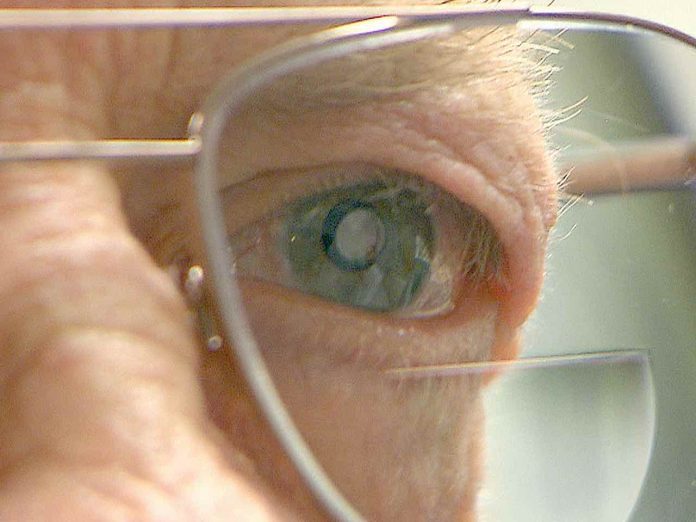Age-related macular degeneration is the most common cause of blindness in the United States; it affects approximately 10 million Americans over age 60. It occurs when the macula, which is located in the center of the retina and provides us with sight in the center of our field of vision, begins to degenerate. With less of the macula working, central vision, which is necessary for driving, reading, recognizing faces, and performing close-up work–begins to deteriorate. A tiny telescope is now available that can restore sight in individuals affected with macular degeneration.
The CentraSight device, which has Food and Drug Administration approval, is implanted in the eye when the lens is removed. It replaces the individual’s own lens and remains in the eye permanently. The procedure takes about an hour, and once the patient has the implant, the telescope magnifies the images viewed by the patient and projects them. The eye, which is a type of video camera, sends images to the brain. The brain requires retraining to interpret the images; thus, following the procedure, patients undergo occupational therapy to help them get used to their new vision. “The eye is kind of like the video camera that sends the image to the brain,” said Mandelbaum.
The CentraSight device does not restore patients’ sight to the level it was before they developed macular degeneration, rather the miniature telescope is designed to improve functional capabilities such as recognizing facial detail, reading signs and allowing patients to see where they are going. However, ophthalmologists caution that it is not the degree of vision that would allow the patient to resume driving a motor vehicle.
To qualify for the procedure, the individual must be at least 75 years of age, have end-stage macular degeneration in both eyes, and have at least one eye that has not undergone cataract surgery. The device is available nationwide. Further information is available at this link.
There are two primary types of age-related macular degeneration:
- Dry age-related macular degeneration: This is the most common type. While its cause is unknown, it occurs as the light sensitive cells in the macula slowly deteriorate, generally occurring in one eye at a time.
- Wet age-related macular degeneration: This is the less common type; however, it accounts for almost all severe vision loss caused by either type. It occurs when new blood vessels behind the retina start to grow beneath the retina where they leak fluid and blood; this can create a large blind spot in the center of the visual field. If this happens, a marked disruption of visionoccurs over a short period of time.
The following are the most common symptoms of AMD. However, each individual may experience symptoms differently. Symptoms may include:
- Blurry or fuzzy vision
- Difficulty recognizing familiar faces
- Straight lines, such as sentences on a page, telephone poles, and the sides of buildings, appear wavy
- A dark or empty area (blind spot) appears in the center of vision
- Rapid loss of central vision, which is necessary for driving, reading, recognizing faces, and performing close-up work
The presence of drusen, tiny yellow deposits in the retina, is one of the most common early signs of AMD. These will be visible to your doctor during an eye examination. While the presence of drusen alone does not indicate the disease, it may mean the eye is at risk for developing more severe AMD. The symptoms of AMD may resemble other eye conditions; thus. A physician should be consulted for diagnosis.















